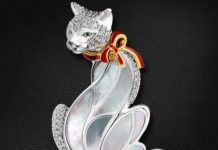Parrots are intelligent, social, and active birds that require a well-arranged living space to stay happy and healthy. Setting up a cage properly ensures that your parrot has everything it needs for comfort, entertainment, and overall well-being.

Whether you are bringing home a new parrot or improving the cage of your current feathered friend, this guide will help you create the perfect environment for your pet.
1. Choosing the Right Cage
Before arranging the inside of the cage, it’s important to select the right cage size and design for your parrot.
Cage Size
A spacious cage is essential to allow your parrot to move, stretch its wings, and play. The cage should be at least twice the wingspan of your parrot in width, depth, and height.
📌 Minimum Cage Size Recommendations:
- Small Parrots (Budgies, Lovebirds): 24″ x 18″ x 24″
- Medium Parrots (Cockatiels, Conures): 30″ x 24″ x 36″
- Large Parrots (African Greys, Amazons): 36″ x 24″ x 48″
- Extra-Large Parrots (Macaws, Cockatoos): 48″ x 36″ x 60″
If possible, bigger is always better!
Bar Spacing and Material
- Bar Spacing: Ensure the gaps between bars are small enough to prevent escape or injury.
- Small parrots: ½ inch spacing.
- Medium parrots: ¾ inch spacing.
- Large parrots: 1–1.5 inches spacing.
- Material: The cage should be made of stainless steel or powder-coated metal to prevent rust and toxicity. Avoid painted or plastic-coated cages that could be chewed.
Cage Shape
Avoid round cages, as they can be stressful for parrots. A rectangular or square cage provides better security and a defined sense of space.
2. Proper Placement of the Cage
The location of the cage is just as important as its setup.
✔️ Best Placement:
- A quiet, well-lit area with natural daylight.
- Near the family or in a social area, but not too noisy.
- Away from drafts, direct sunlight, and air conditioning vents.
❌ Avoid Placing the Cage:
- In the kitchen (fumes from cooking can be harmful).
- In a bathroom (humidity can cause health issues).
- In an isolated area where the parrot feels lonely.
The cage should be against a wall for security, with at least one side covered to make the parrot feel safe.
3. Setting Up Perches
Perches are essential for your parrot’s foot health and comfort.
Types of Perches:
- Natural Wood Perches – Mimic tree branches and promote foot exercise. Best options: Manzanita, Dragonwood, or Natural Branches (Pesticide-Free).
- Rope Perches – Soft and comfortable, good for climbing. Ensure they are safe, chew-resistant, and replaced when frayed.
- Concrete or Mineral Perches – Help trim nails but should not be the only perch.
- Variable Thickness Perches – Different diameters help prevent foot sores and arthritis.
📌 Tip: Place perches at different heights, but avoid placing them directly over food or water bowls to prevent contamination.
4. Choosing the Right Food and Water Bowls
Parrots need fresh food and water daily, so their bowls should be secure, durable, and easy to clean.
✔️ Best Bowls:
- Stainless steel or ceramic bowls (safe and chew-resistant).
- Mounted securely to avoid tipping over.
📌 Water Bowl Placement:
- Keep water away from perches to prevent droppings from contaminating it.
- Change water at least twice a day to keep it clean.
📌 Food Bowl Placement:
- Have separate bowls for pellets, seeds, fruits, and vegetables.
- Place bowls slightly above perch level to prevent waste contamination.
5. Adding Enrichment Toys
Parrots are highly intelligent birds that need mental stimulation. Boredom can lead to stress, feather plucking, and aggression.
Types of Toys to Include:
- Chew Toys: Made of bird-safe wood (balsa, pine, or untreated branches).
- Foraging Toys: Hide treats inside to encourage natural problem-solving.
- Shreddable Toys: Paper, palm leaves, or coconut fibers for natural destruction behaviors.
- Interactive Toys: Bells, mirrors (for some species), and puzzle toys for entertainment.
- Swings and Ladders: Provide exercise and variety in movement.
📌 Toy Rotation: Change toys every 1–2 weeks to keep things interesting!
6. Providing a Comfortable Sleeping Area
Parrots need 10–12 hours of uninterrupted sleep each night.
✔️ To create a restful sleeping area:
- Cover the cage partially at night with a breathable cloth (not too heavy).
- Place a sleeping perch in a quiet corner.
- Keep the room dim and quiet during bedtime.
7. Cage Cleaning and Hygiene
A clean cage is essential for preventing infections and illnesses.
✔️ Daily Cleaning:
- Replace food and water bowls with fresh supplies.
- Remove dropped food, feathers, and droppings from the bottom tray.
- Clean perches and toys with bird-safe disinfectant or vinegar-water mix.
✔️ Weekly Cleaning:
- Wash and sanitize the cage bars, grates, and toys.
- Change and clean perches if necessary.
✔️ Monthly Deep Cleaning:
- Scrub the entire cage with hot water and mild soap.
- Disinfect with a non-toxic, bird-safe cleaner.
- Check for signs of rust or damage and replace parts if needed.
8. Safe Cage Accessories
Some additional accessories can enhance your parrot’s environment.
✔️ Safe Accessories:
- Cuttlebone or Mineral Blocks – Provide calcium and keep beaks healthy.
- Bird Bath or Spray Bottle – Helps maintain clean and healthy feathers.
- Hiding Spots or Tents – Some parrots like cozy sleeping areas (but avoid fabric tents if your bird chews them).
❌ Avoid Unsafe Accessories:
- Plastic mirrors (some parrots become obsessed).
- Small loose parts that can be swallowed.
- Rough-edged toys that could cause injury.
Final Thoughts
Arranging a parrot’s cage properly is essential for their health, happiness, and longevity. By providing the right perches, toys, food and water setup, and a clean environment, you can create a stimulating and safe home for your feathered friend.
Remember, a well-arranged cage promotes natural behaviors, prevents boredom, and strengthens the bond between you and your parrot. With the right setup and regular maintenance, your parrot will thrive in a comfortable, enriching space! 🦜💚



















